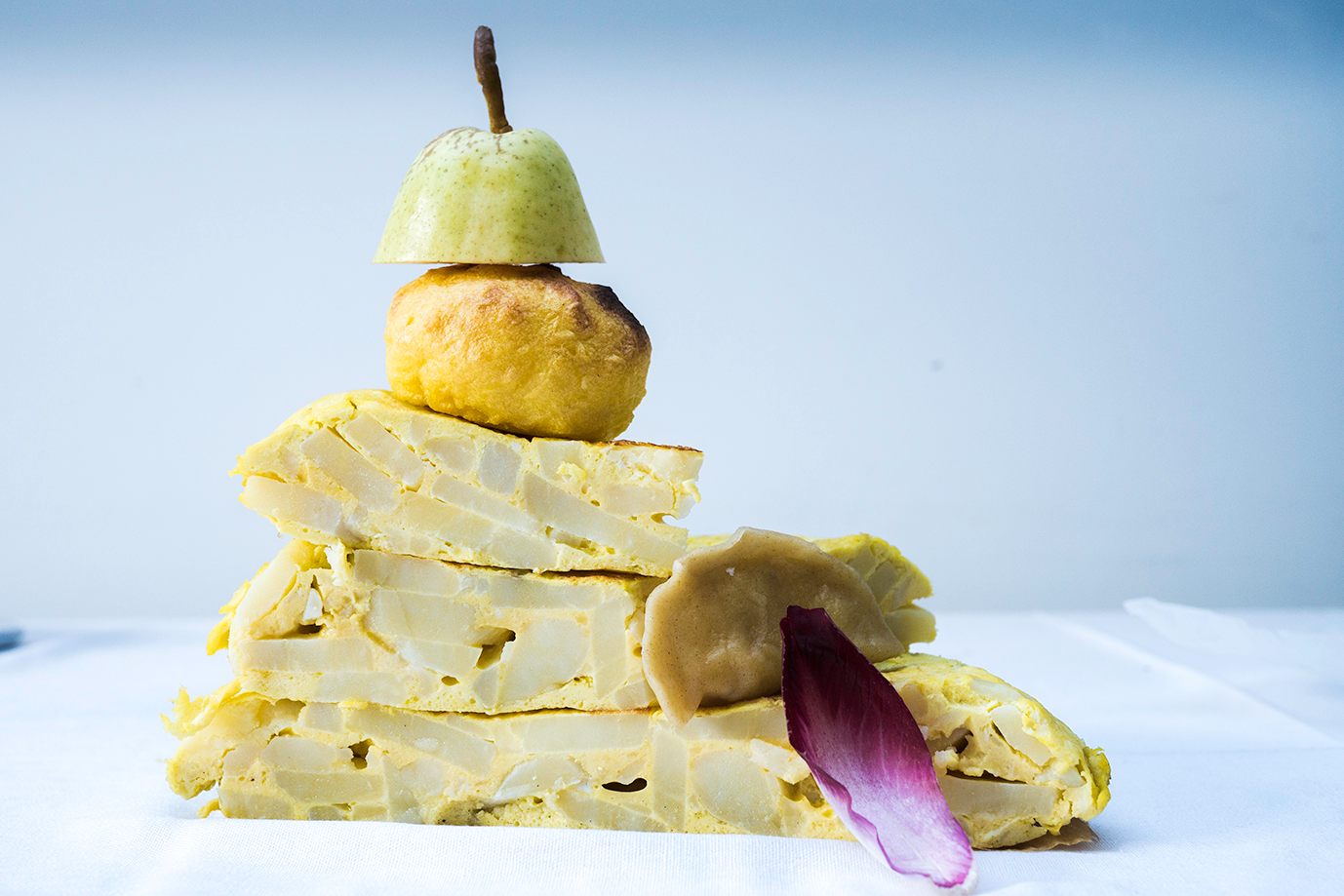What Will Your National Dish Look Like in 2050?
We want to know your predictions for the future’s culinary landscape.

National dishes are often unofficial. Yet they’re proudly upheld as proof of culinary ingenuity and tradition. So when the Europe-based Center for Genomic Gastronomy set out to design new national dishes, they ran into a few speed bumps.
After all, what constitutes a national dish? According to the Center’s Zackery Denfield, most countries have several that are considered “national.” Plus, different regions and communities often have their own specialties, which can make choosing one dish to represent a nation problematic. Other times, national dishes touch on issues such as colonialism and racism.
Nevertheless, there’s something about a national dish that is undeniably compelling to residents and travelers alike. That’s true regardless of whether a national dish is unofficial, such as Korean kimchi, or enshrined in law like Norway’s fårikål. (Both contain the humble cabbage: Denfield remarks that many national dishes are simple and hearty.)
In 2016, the Center was commissioned to create a new national dish for France. “There’s a lot of pride in France about food and food culture,” says Denfield, who jokes that a wrong step could mean getting kicked out of the country. Museum-goers at Paris’s Jeu de Paume participated in the Center’s project: They chose from attributes including “traditional,” “vegetarian,” or “wasteless,”and then they could try their new dish.
In 2018, Portugal’s MAAT Museum commissioned the Center to devise new national dishes for Portugal. Looking ahead to the year 2050, the Center imagined four possible futures for a country facing climate change. Today, we live in a society where our attitudes towards technology and even each other fluctuate. So, the Center imagined four potential futures influenced by those attitudes.
If in 2050 Portugal is a place with high interpersonal trust and confidence in technology, the national dish might constantly fluctuate in response to new fashions, farming methods, and crops designed to withstand weather challenges. But if technology and migration (human and culinary) are viewed with suspicion, then, the Center’s report darkly surmises, the Portuguese will eject foreign foods and a grim nationalist cuisine will develop. Traditional dishes containing potatoes and cod will be spared (even though much of Portugal’s famed cod comes from abroad), and the future will likely taste “pretty bland,” says Denfield. The New National Dish: Portugal 2050 project will continue until October, and chefs in restaurants and the Center’s test kitchen will create recipes based on the four scenarios.
In 2050, what do you think your national dish will look like? Will it use futuristic ingredients, or look more traditional? How will it be influenced by future events? Atlas Obscura wants to hear your ideas. Feel free to take inspiration from the Center for Genomic Gastronomy projects, or to devise your own logic. Send us your national dish ideas using this form, and we’ll share a selection of your responses in an upcoming article.
Gastro Obscura covers the world’s most wondrous food and drink.
Sign up for our regular newsletter.































Follow us on Twitter to get the latest on the world's hidden wonders.
Like us on Facebook to get the latest on the world's hidden wonders.
Follow us on Twitter Like us on Facebook